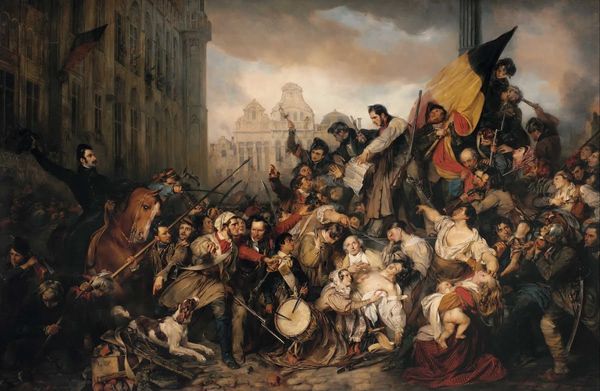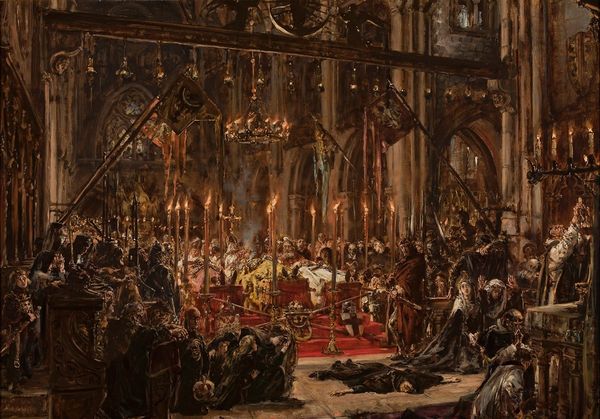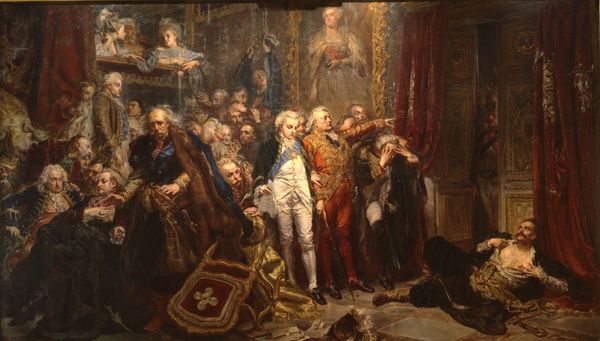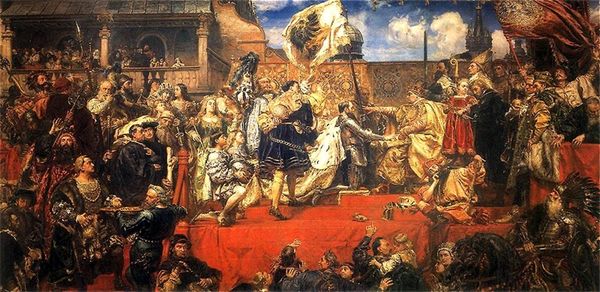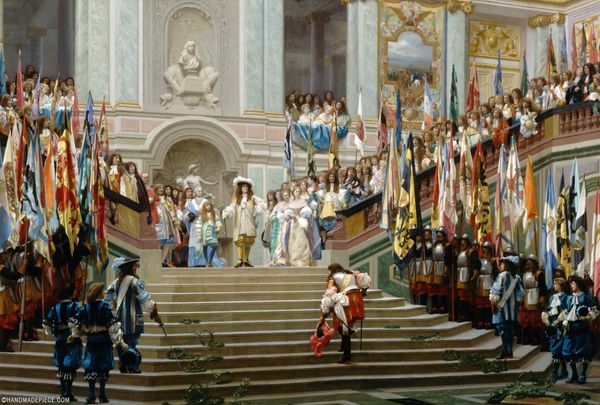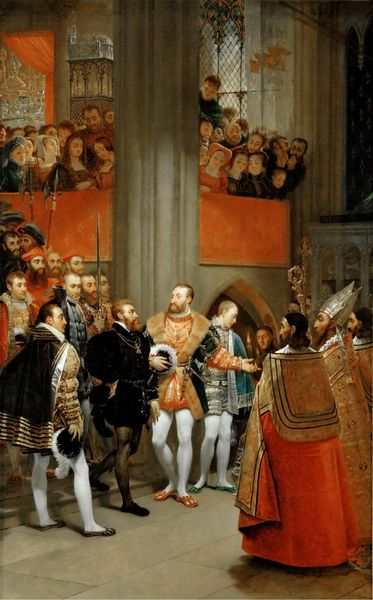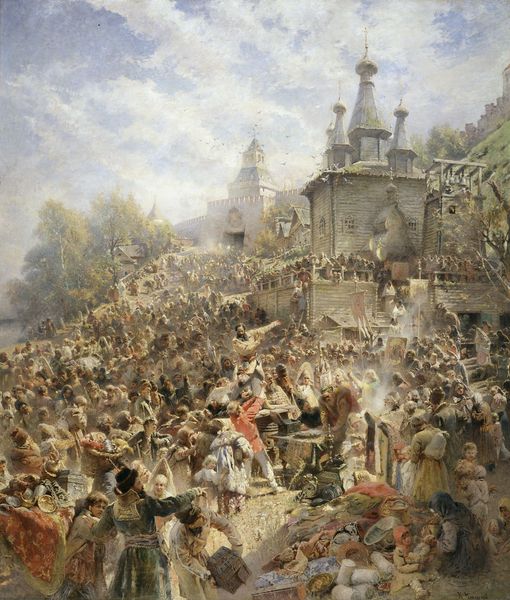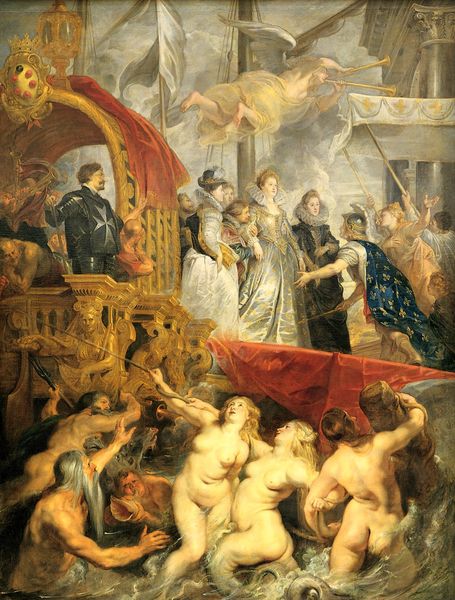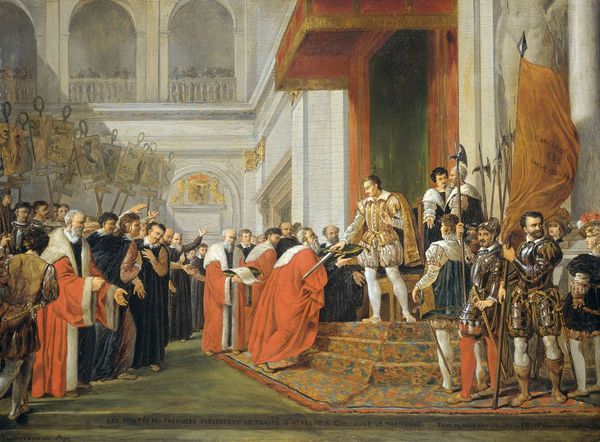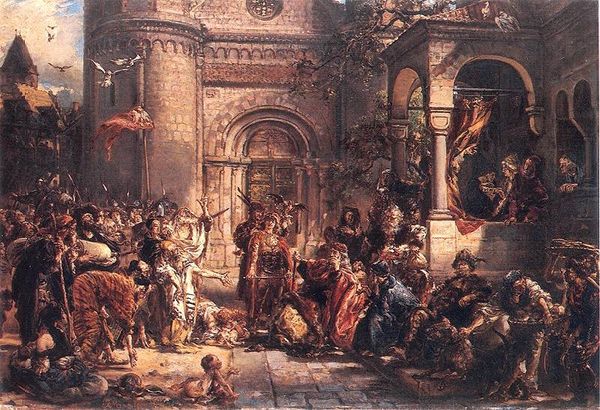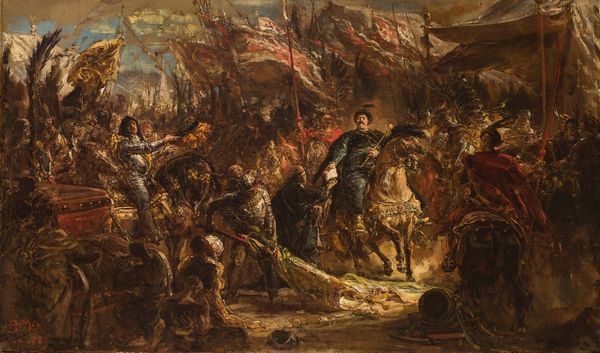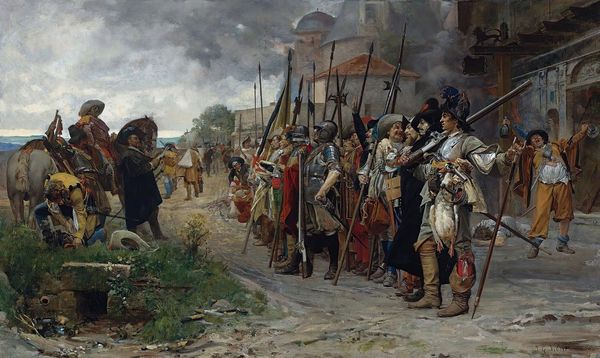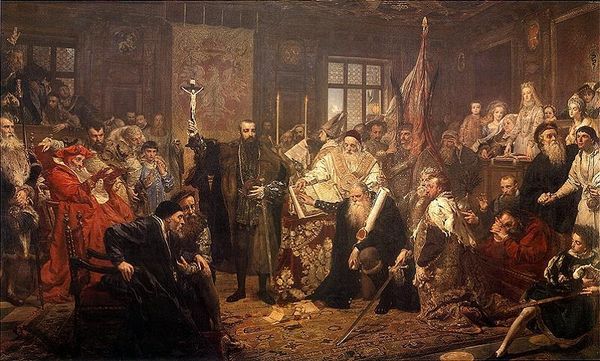
Dimensions: 446 x 247 cm
Copyright: Public domain
Curator: Jan Matejko's epic oil painting, "The Constitution of the 3rd May 1791," completed in 1891, hangs here at the Royal Castle in Warsaw. Editor: It's immediately overwhelming—the sheer density of figures, the dynamism in their gestures. One senses an event of great importance. Curator: Indeed. Matejko meticulously reconstructs a pivotal moment in Polish history: the adoption of the Constitution. Observe the strategic placement of figures. King Stanisław August, elevated, becomes the focal point. Editor: Yes, his enlightened figure and upraised constitution draw one's gaze. There’s almost a theatrical presentation happening through his position, a potent emblem of hope rising from what looks to be political pandemonium below. How does this constitution intersect within the social climate? Curator: Ah, good question! Poland was on the verge of collapse. The Constitution sought to modernize and save the nation but triggered strong opposition from internal conservatives and, externally, Catherine the Great. The composition reflects the chaotic struggle and urgency of these times. Editor: I see that now. The almost frenetic energy, balanced against the strong verticality, mimics its tense atmosphere. So, how does Matejko’s Romantic style emphasize the symbolic qualities you mention? Curator: Romanticism privileges emotions, the subjective experiences. Notice Matejko doesn't present a sanitized version of events, he creates a vibrant and turbulent record through dramatic contrasts. This heightens the sense of patriotic fervor, even in the face of internal division. Editor: Absolutely. While the style and scale feel conventional to Academic art, there are emotional undercurrents at work. In a curious detail, some subjects depicted turn directly out to meet our eye line. Do you know the reason for such an interesting inclusion of self portraiture in a grand scene? Curator: Matejko, as a Polish patriot, felt a moral responsibility to depict history. He weaves his face among several others. He doesn't create merely a historical document but uses the weight and scale of the composition to construct a narrative around collective memory. Editor: A powerful statement indeed. By infusing so much dramatic emotion into his rendering, Matejko has successfully elevated the adoption of Poland's Constitution of 1791 beyond its historical roots into something closer to a cultural call to action, with significant symbolism. Curator: Yes, Matejko ensured the historical subject had lasting importance. The grand scale emphasizes national sentiment and patriotism within the frame of Poland’s history.
Comments
No comments
Be the first to comment and join the conversation on the ultimate creative platform.
